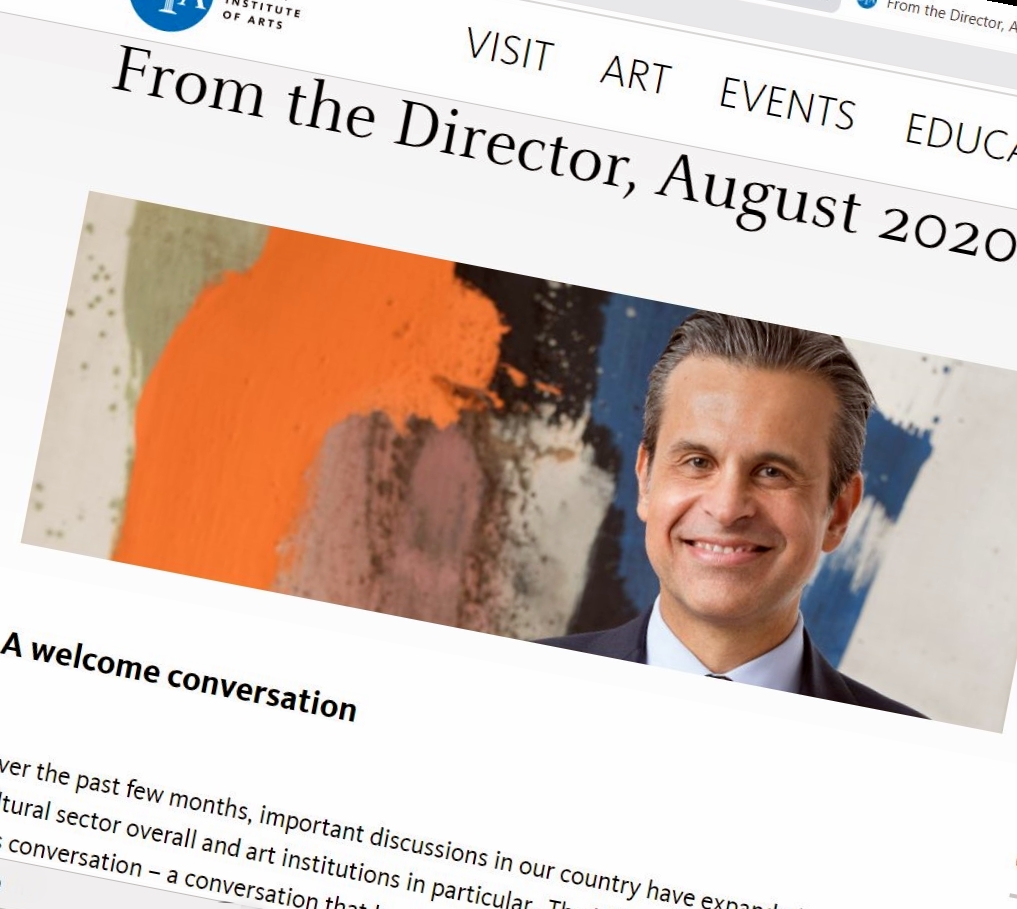The DIA director speaks out about an upcoming New York Times article that he sees as the latest in a series of summer setbacks for his image and the museum's.
In a monthly newsletter message to members and patrons, Salvador Salort-Pons deploys a classic public relations tactic. Based on an interviewer's recent questions, the Detroit art museum leader plays offense by rushing ahead with an advance response under the headline "A welcome conversation."

Salvador Salort-Pons: "We can always do better and more."
"Last week, I spoke with a New York Times journalist who asked me about our visitor-centered approach as well as our outreach to African American communities," he writes. "We expect he is writing a story based on the premise, heard from former employees, that we are no longer taking a visitor-centered approach to our work and that this has caused poor outreach to Black communities in Detroit."
The paper's interest is prompted by a July statement by a new group called DIA Staff Action, which claims that a "hostile and chaotic work culture ... has affected the quality and accessibility of the service offerings for DIA’s constituents." The group says it represents an undisclosed number of current and former museum employees calling for the director's resignation.
Graham Bowley of The Times covered that development July 15, writing that "concerns ... about Mr. Salort-Pons’s management style and about DIA's treatment of its Black employees are roiling the institute."
Salort-Pons, who calls the critical statement "a whistleblower complaint," acknowledges: "We can always do better and more, and we will strive to do so."
He doesn't name last week's interviewer, who presumably was Bowley for a follow-up article.
I let him know that our business model is unique in the country and therefore difficult to compare with any another museum. Over time, our visitor-centered approach has evolved and has been enhanced to be more inclusive, helping us not only to serve our communities in Detroit, but also those in the three counties, the region and the state.
... Now is the time to talk in detail with our staff, our community, our board and our volunteers to craft a new strategic plan, which will help us define the role the DIA will play in our society.

What his headline calls "A welcome conversation" doesn't seem like one.
Salort-Pons' effort at proactive damage control addresses questions about whether DIA galleries and staff appropriately reflect Metro Detroit's demographics:
While we have done a lot of work in the areas of workplace culture as well as inclusion, diversity, equity and access, we have much more to do, and we need to do it with more urgency while listening to all points of view. ...
The number of programs and exhibition designed to serve our African American communities has increased over time and we provided the reporter with a three-page overview of the last two years’ programs. ...
We continue to diversify our collections with the goal to present a balanced display of creativity (click here to learn more) and we continue to diversify our board and staff to reflect the demographic make-up of the communities in the region we serve. While we have taken positive steps -- for example, establishing a paid internship program to expand access to the museum field -- we still have more to do to create a successful environment for inclusion, diversity, equity and access. This continues to be a top priority for our organization and for me personally.

The Spanish immigrant took his citizenship oath three years ago this month at his workplace. (Photo: DIA)
The director, who joined the museum in 2008, held curatorial and leadership positions before gaining the top job in October 2015.
His criticism-focused August message begins by addressing "allegations regarding two loans of art to the DIA from my father-in-law, the first in 2010 and the second in 2019."
Immediately upon receiving the initial complaint, which was provided to the DIA by the press and not the whistleblower or its representatives, the DIA’s Executive Committee retained an independent law firm to investigate the allegations.
While that investigation is ongoing, I would like to provide some background on art loans.
It is a common practice in American museums to receive long-term loans of works of art by artists who are not well-represented in the collection, so we can enhance the visitor experience, provide educational opportunities and allow us to cultivate patrons for possible gifts of art. This practice has factored significantly in the DIA assembling its extraordinary collection.
The museum followed its collections management policy, as well as its professional practices policy and guidelines, and both loans were disclosed to and approved by our board chair. We believe those policies to align with best practices among American art museums.
Still, to ensure that the best policies are in place going forward, the review conducted by the independent law firm will include a review of the museum’s policies, in addition to my compliance with them.
Related:
Present and Past Detroit Institute of Art Staffers Push to Remove Director, July 20


 by
by







